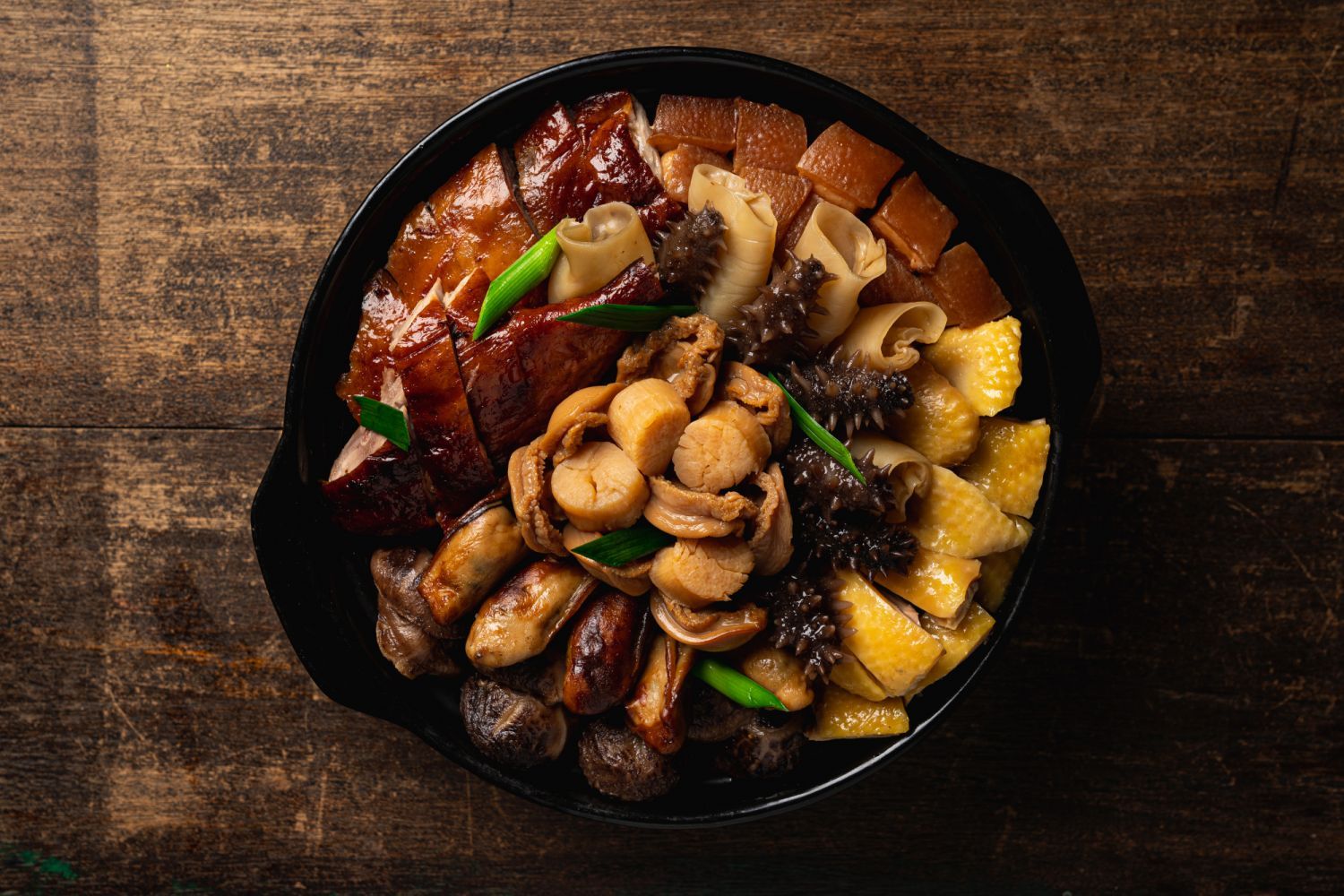The Chinese New Year staple of poon choi doesn’t taste good, says Tatler Hong Kong deputy editor and Tatler Homes Hong Kong editor Andrea Lo. But is it time to abandon this tradition—or does it have room for improvement?
Chinese New Year is always a time filled with joy and good cheer—except for the several hours I am subjected to poon choi.
My extended family and I share this dish every Lunar New Year. It’s a relatively new practice for us: at some point in the last decade, it was decided that ordering poon choi would be less cumbersome and more “fun” than one of us having to create an entire Chinese New Year meal from scratch. Thus began my misery.
Poon choi is prepared by first searing, deep-frying, grilling, poaching or stewing over a dozen ingredients—there is no standardised recipe. After that, each ingredient is layered into a metal or porcelain basin. A sauce is poured in—the recipe for this varies. Some are made with abalone, others from a roasted pork or duck bone broth.

The ingredients that are best served without heaps of sauce, such as shrimp and poached chicken, as well as the most expensive and thus impressive, like abalone, are usually placed at the very top. The middle part is taken up by things like cauliflower and shiitake mushrooms. The likes of pork rind, turnip and taro, good for soaking up the flavours of the sauce, sit at the bottom.
My first problem with poon choi? It is typically only eaten hours after it is made and requires reheating before serving. This means by the time you have it, your poon choi is inevitably overcooked. And who likes overcooked food?



